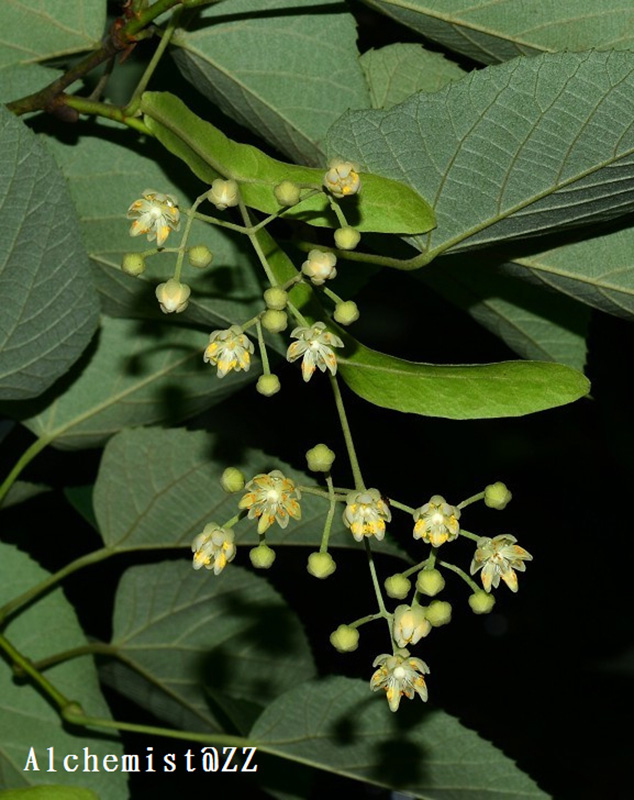鄂椴 Tilia oliveri

- Scientific Name: Tilia oliveri Szyszyl.
- Ref: Hooker’s Icon. Pl. 20: t. 1927. 1890
- Synonym: Tilia pendula V.Engl. ex C.K.Schneid.
- English Common Name: Oliver’s lime
- Chinese Common Name: 鄂椴 È duàn, 粉椴 fěnduàn, 奥氏椴 Ào-shi duàn, 白背椴 báibèiduàn
- Family: Malvaceae
- Genus: Tilia
- Distribution: Evergreen or mixed evergreen and deciduous forests; 1300-2300 m. Gansu, Hubei, Hunan, Shaanxi, Sichuan.
- Photo: 05/22/2013
Trees 6-26 m tall. Bark dark gray, smooth with shallow furrows and rounded ridges; branchlets glabrous; winter buds big, glabrous or hairy. Petiole 1.5-5 cm, glabrous or rarely pilose; leaf blade broadly elliptic, ovate-orbicular, or triangular-ovate, 6-14 × 4.5-10 cm, abaxially densely gray-white stellate tomentose, adaxially glabrous, lateral veins 5-6 pairs, base shallowly cordate to obliquely truncate, margin serrate to serrulate, teeth often awned, apex shortly acuminate. Cymes 7-20-flowered, as long as or shorter than bracts. Bracts band-shaped, sometimes broader distally, 5-8 × 1-2.5 cm, adnate to peduncle for 2/5 of length, sessile. Sepals triangular-ovate, 5-6 mm, abaxially densely stellate puberulent, adaxially densely tomentose. Petals 5, 6-7 mm, glabrous. Stamens 45, in 5 fascicles, glabrous; staminodes smaller than petals, glabrous, stalked. Ovary densely stellate tomentose; style glabrous. Fruit obovoid, globose, or ellipsoid, 7-10 mm, gray-white tomentose and verrucose; exocarp woody, hard, indehiscent. Fl. Jun-Aug, fr. Aug-Sep. 2n = 82*. (Flora of China)